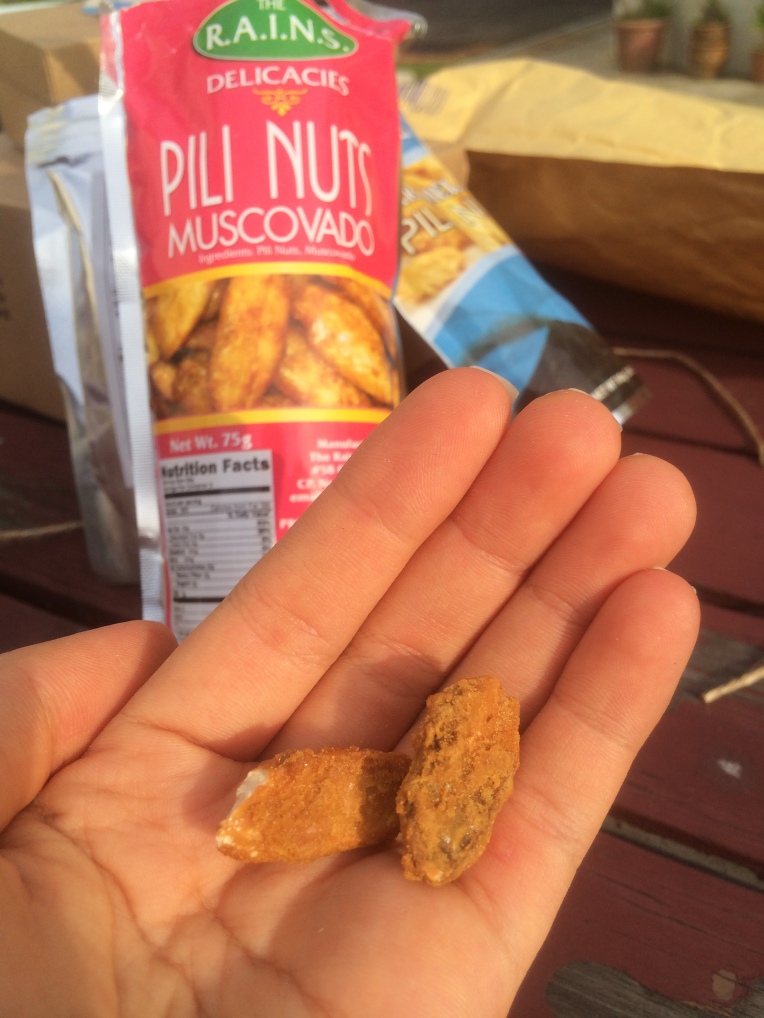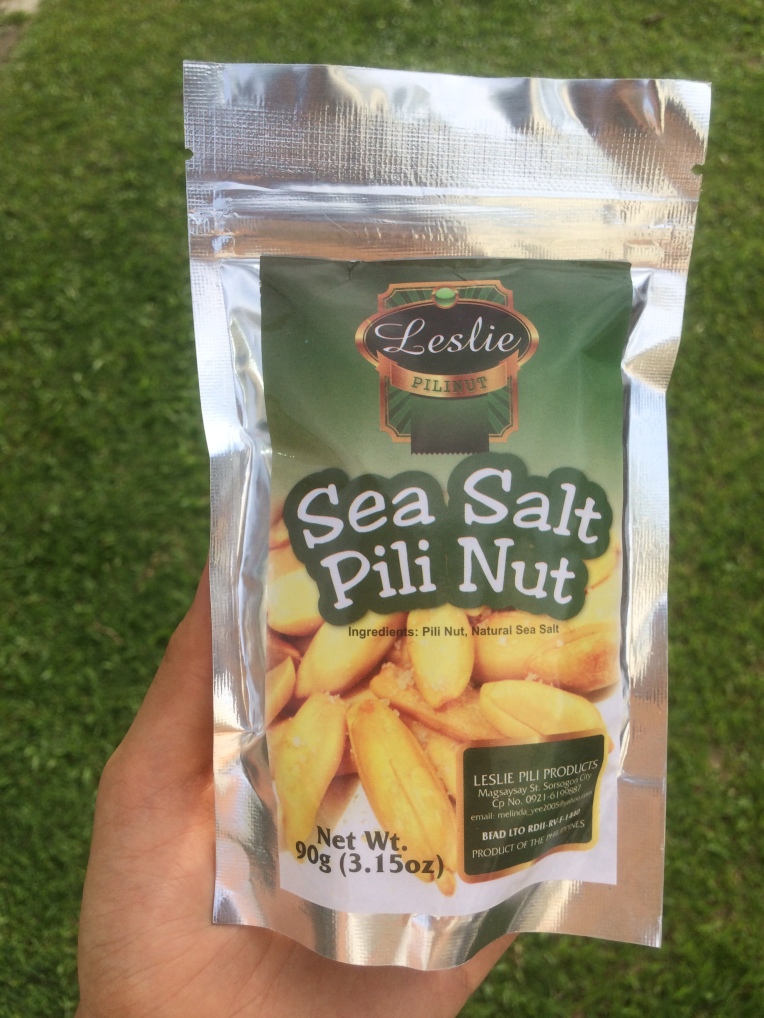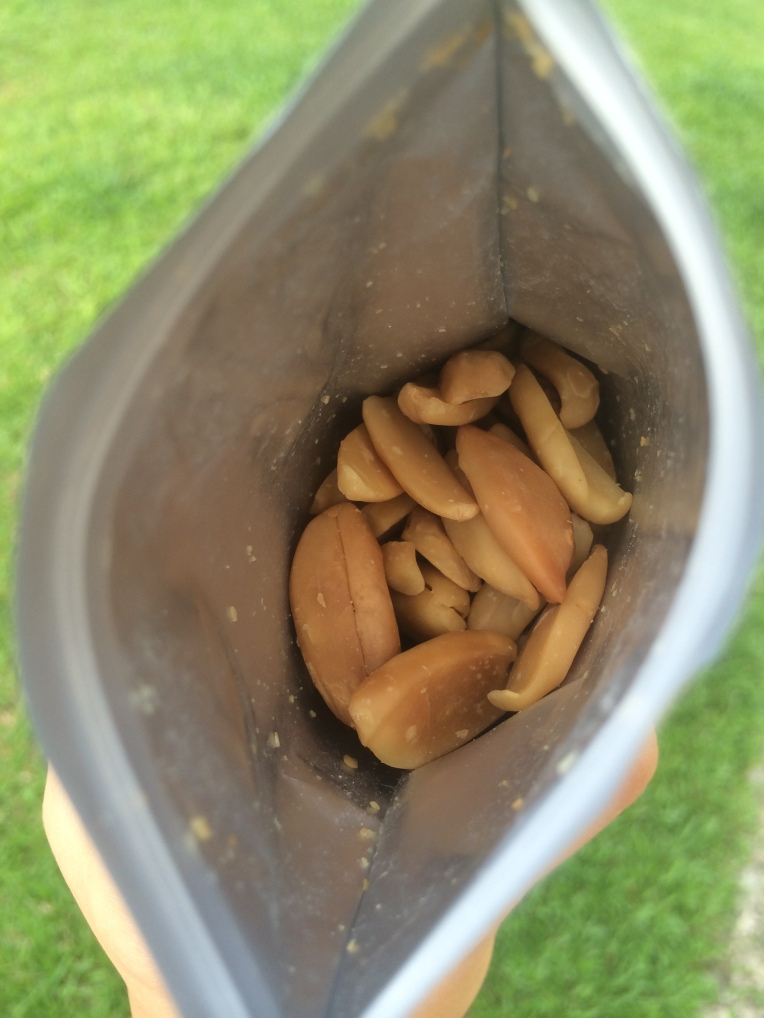I had never heard of the Pili nut before Cris from the Philippines Trade Industry introduced them to me.
She kindly sent me some samples of the Pili nuts for me to try, and I thought it would be cool to let the world know about the Pili nut which is known to some as the “King of Nuts”.
The Pili nut grows on… well, a Pili Tree, no doubt. Haha. And this Pili Tree is found in bushes across tropical Asia and other Pacific islands, but the ones grown in the Bicol Peninsula, southeastern end of the Philippine island of Luzon, are acknowledged as the best-tasting. This is probably because Bicol’s land is a fertile mix of volcanic soil and generous rainfall since it is home to at least five active volcanoes, one of which is the perfect-coned and world-renowned Mayon Volcano.
According to Cris, the Pili Nut has the flavor of pumpkin seed when raw, and takes on an entirely different identity when roasted. It now comes in sugar glaze, salted-roast, sea salt and chili garlic flavours, which I’ll be reviewing later!
In fact, it was interesting to find out that the Philippines is the only country capable of the commercial production and processing of the Pili Nut.
I wonder if it was named the Pili Nut because it sounds similar to the Philippines. Phili = Pili maybe? Haha.
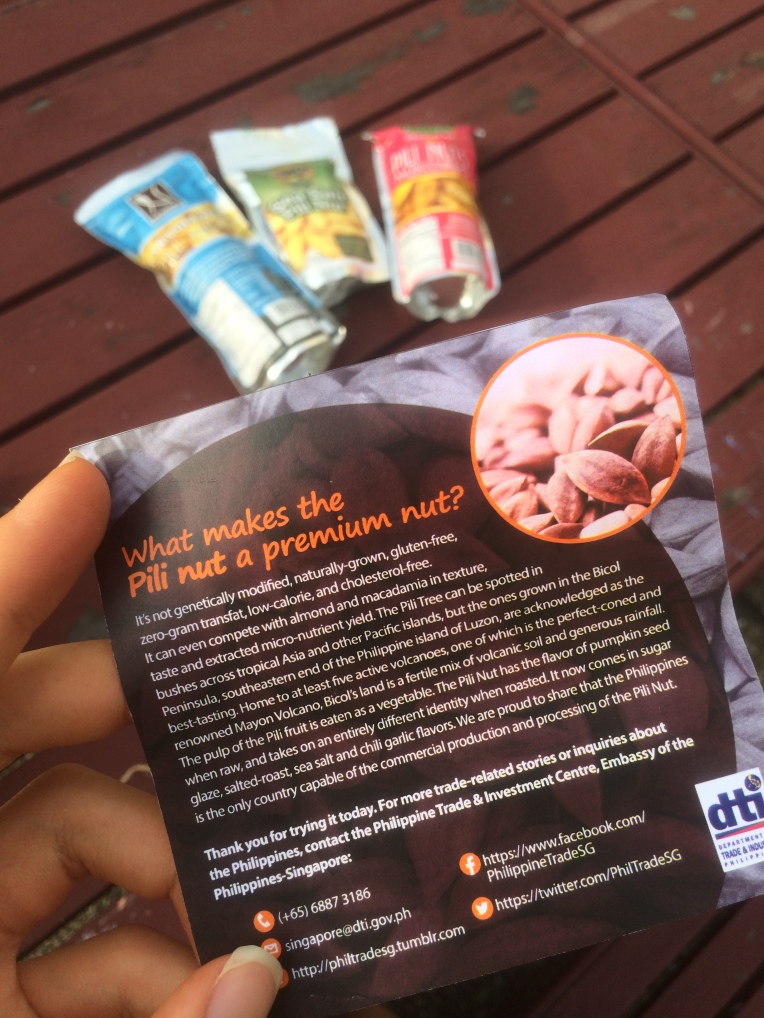
Like the details in the photo above, you may be wondering what makes the Pili Nuts so special? According to the brochure, it’s not genetically modified, and is naturally grown, gluten-free, zero-grams transfat, 100% natural, low calorie and cholesterol-free. It can compete with almond and macadamia in texture, taste and extracted micro-nutrient yield.
That’s a big promise for one small nut!
The three flavours that I was sent to review were:
Caramelized Pili Nuts, Muscovado Pili Nuts and Sea Salt Pili Nuts.
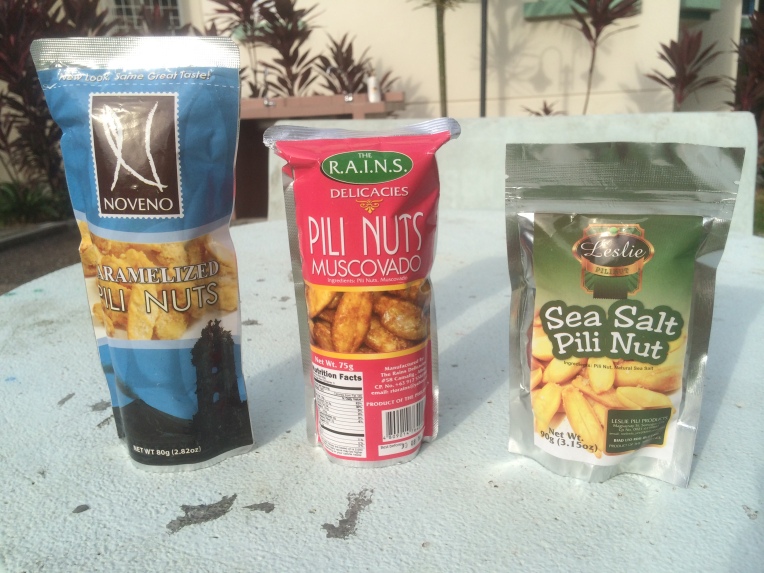
I’m a-okay with nuts. Not a lover, but not a hater either. I prefer all-natural baked nuts to salted nuts, and definitely sweetened over salty if I was going for ‘dessert’. Honey Walnuts are the best thing ever.
But let’s get back to the Pili Nuts yeah?
First up, I opened up the Caramelized Pili Nuts.
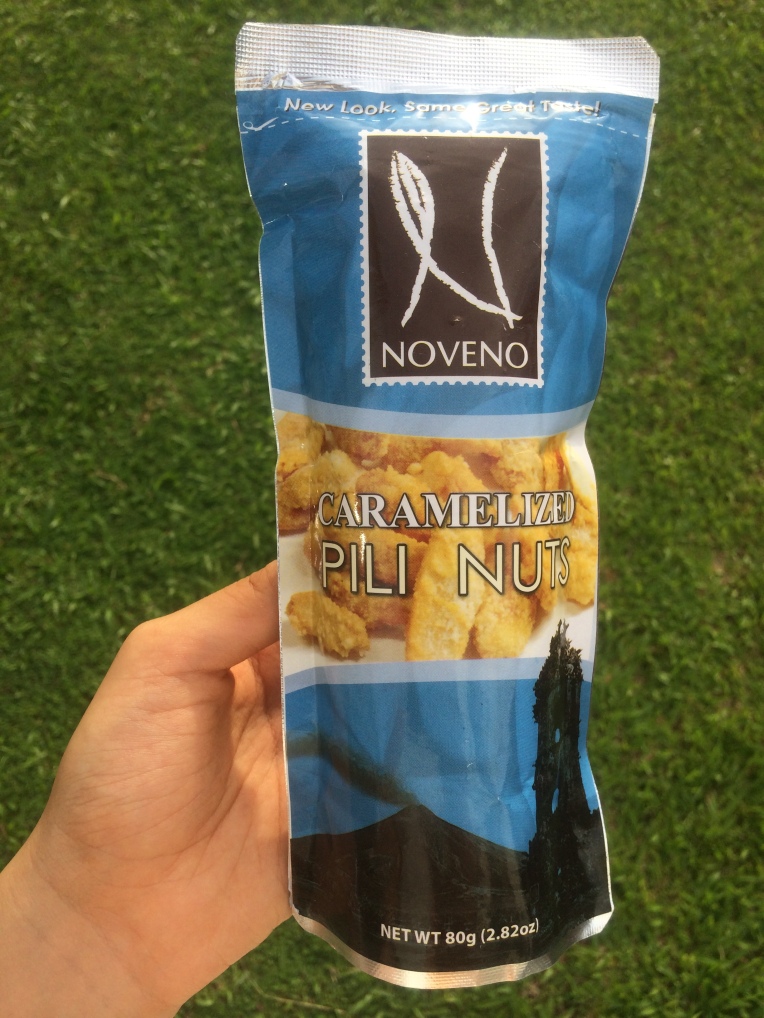
Weighing in at a whopping 80grams, our first contender stood out from the rest. Clas in blue and black, the Caramelized Pili Nuts stood half a head taller than the rest. The crowd went wild. You know a winner when you see one. (haha sounds like a wrestling match yes?)
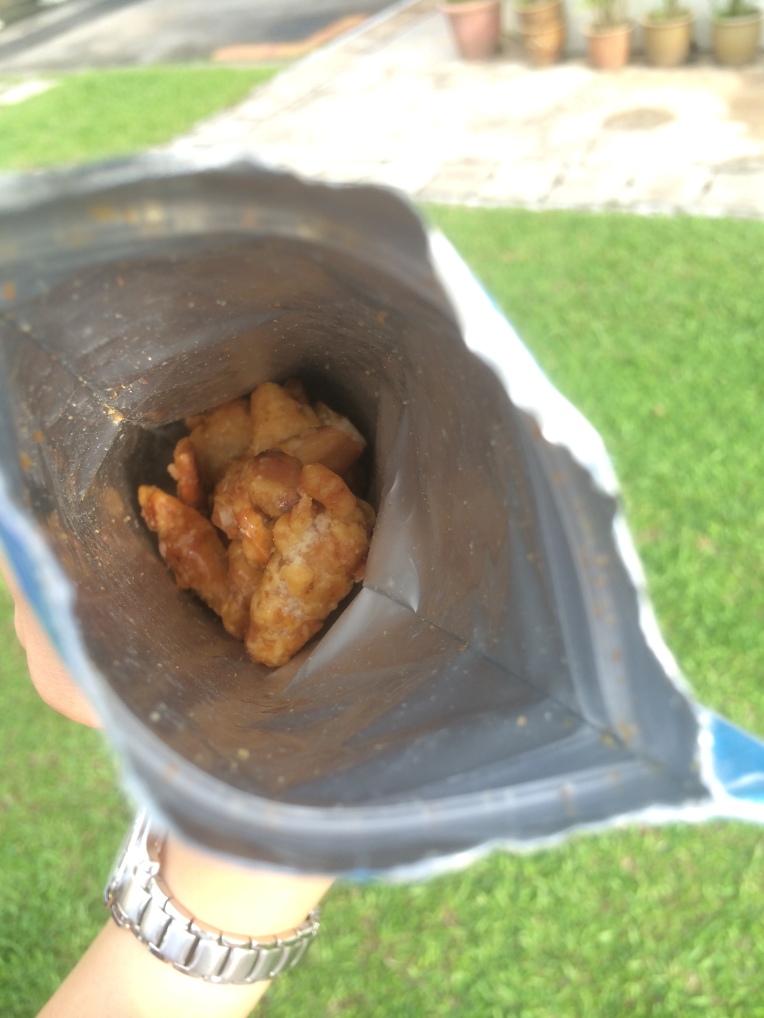
The packet was maybe about 2/3 filled with nuts? I liked that it came with an inbuilt ziploc, so that I could store the nuts after snacking on them.
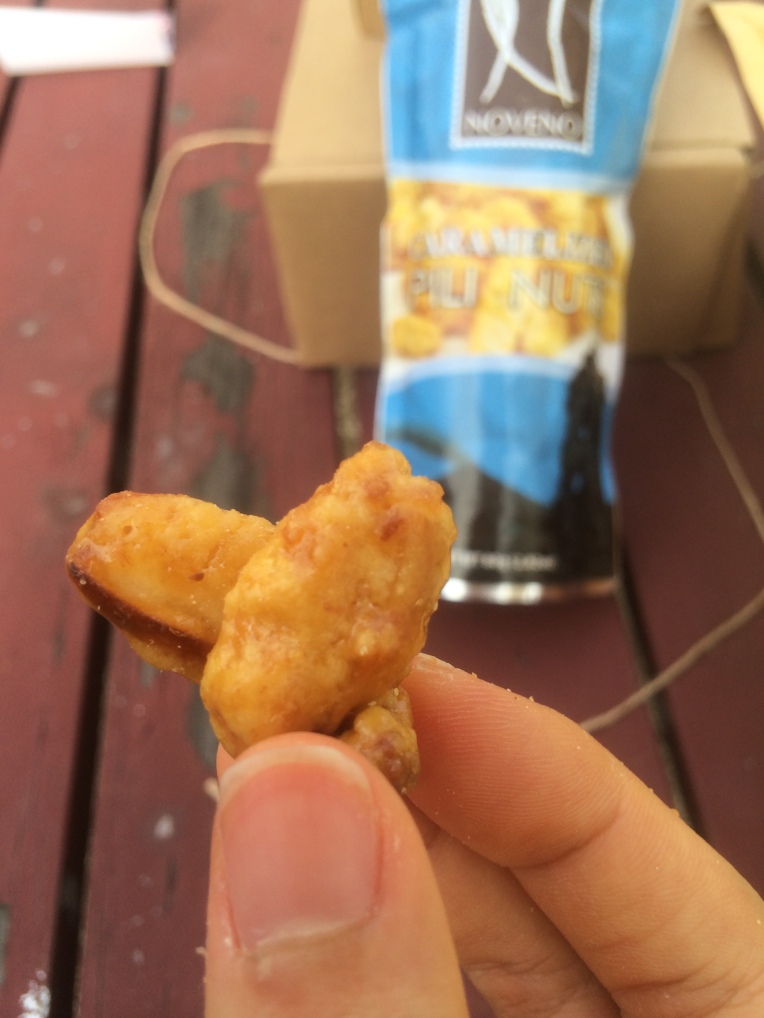
These were good! Rather hard though, because of the caramelised sugar crystals, but the sweetness was reminiscent of the sweet caramelised popcorn you get in the theatres. It didn’t taste of the awful fake sweetness you sometimes get from Garret’s popcorn. BUT since they were coated in sugar, you couldn’t really taste the nut itself. More like crunchy sugar with a nutty centre.
Kids would definitely like this flavour!
Muscovado Pili Nuts

If you didn’t already know, muscovado is a type of sugar that we sometimes use in baking. It’s an unrefined sugar made from the juice of the sugarcane by evaporating and draining of the molasses.
These Pili Nuts came with a hard brown coating of muscovado. It wasn’t purely sugar though, but I’m not too sure what they used to bind the muscovado sugar into the coating.
Visually, it reminded me of the brown nuts we use to eat in Kacang Putih. You know those nuts with the crispy brown outer layer and the lovely savoury flavour? They were on of my favourites, after sugar peanuts and the orange crackers.
Tastewise, these were not as sweet as the Caramelized Pili Nuts, and were easier to bite into.
This was my favourite out of the three!
Sea Salt Pili Nuts
So I mentioned earlier that I prefer sweet over salty nuts… well sweet over salty anything actually. Except lunch and dinner. I’ve tried eating ice cream and waffles for lunch, but I just felt so strange after that. So incomplete. Like something was missing from my life. Haha. But I would totally do that again just for fun.
Pardon me for going off on a tangent again, my mind is hopping all over the place. I’m just so glad that finals are over!
The salty nuts were the only ones that let the true flavour of the Pili Nuts shine through, since they weren’t masked by any coating. The Pili Nuts on their own don’t have a very distinct crunch, and they have the same shape and texture as peanuts. Imagine a loooong peanut. I can’t really put my finger on the exact flavour of the Pili Nut, but it has a slightly bitter undertone to it compared to peanuts. I think I would agree with the description in the brochure that they taste like a cross between macadamia and almonds. The smoothness of the macadamia with the bitterness of almonds.
Conclusion:
I was definitely curious when Cris first told me about the nuts, and rather apprehensive about trying them as well (What if I hate them? Like how I don’t like Macadamias haha. Or worse… what if I’m allergic? After all, nut allergies are one of the most common allergies around)
I’m relieved to say that the Pili Nuts were pretty good, and it’s nice to add another nut to my list. Haha, expanding my foodie repertoire. I wonder if they have Pili Nut Butter? Hmm, that could become a thing haha.
But yes, these nuts are worth a try, at least once, so you can say you’ve tried the Philippines’ Native Nut! It’s all part of embracing food culture.
Thanks again to the Philippines Trade Industry for sending me these nuts to review and for exposing me to a part of your food culture!


